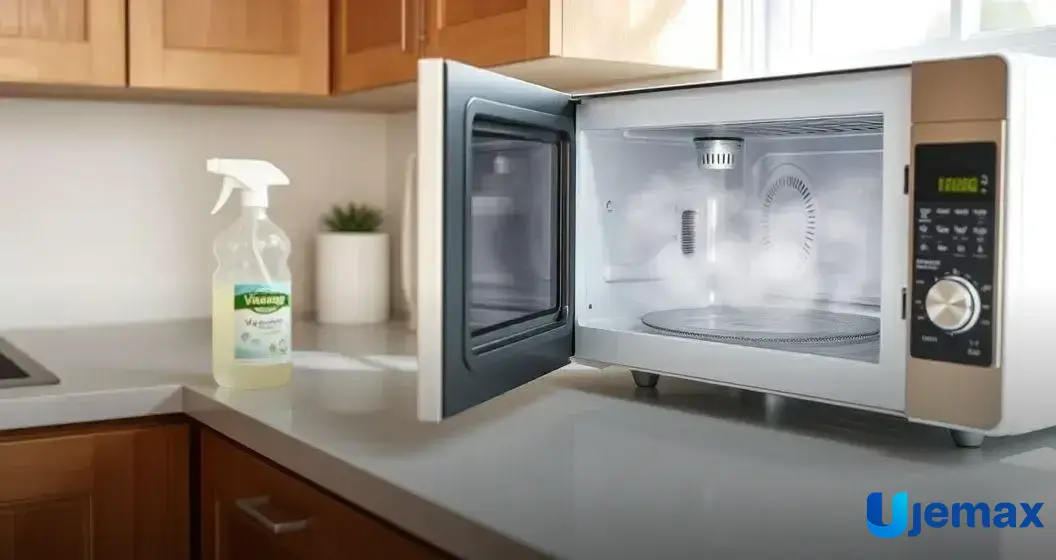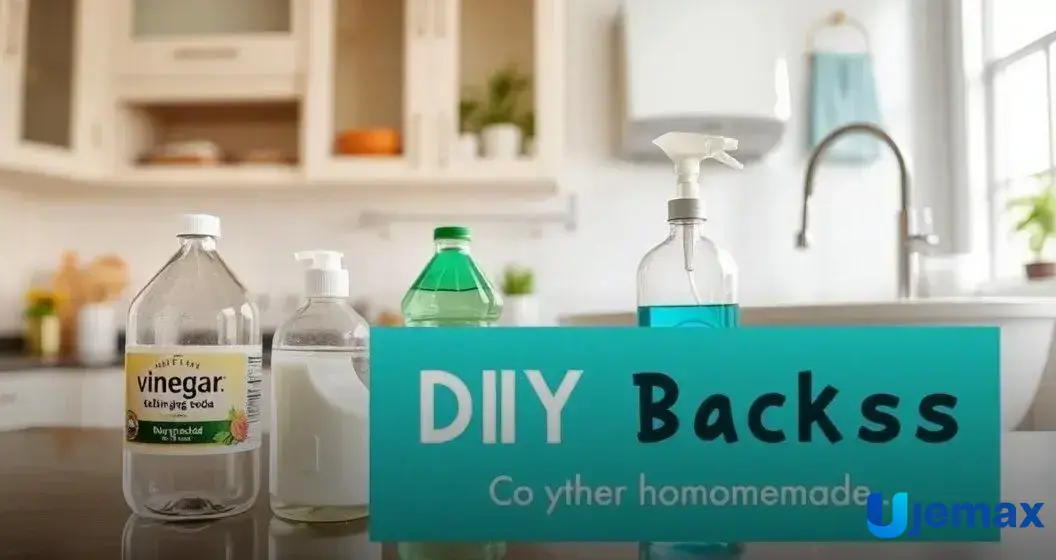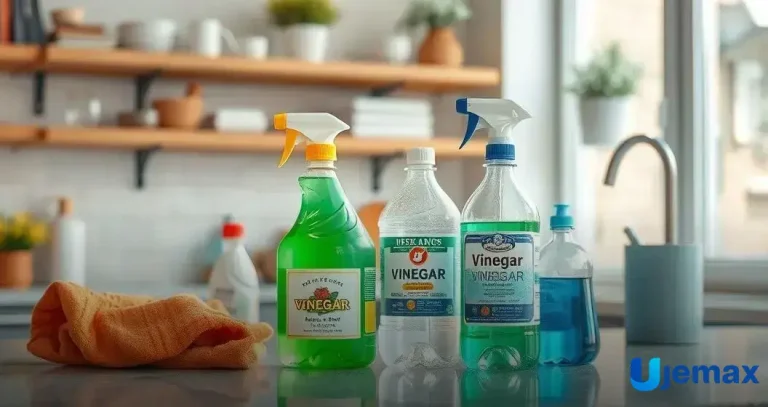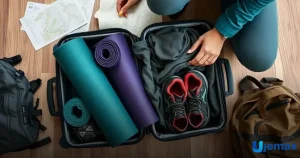ADVERTISEMENT
Budget Friendly Cleaning Hacks with Vinegar can transform the way you keep your home spotless without spending a fortune. This natural solution is versatile, effective, and easy to use for almost any cleaning task.
From kitchen counters to bathroom tiles, vinegar tackles grime, odors, and stains with minimal effort. Its affordability and eco-friendly nature make it a smart choice for anyone looking to save money while keeping their home fresh.
Learning a few simple tricks with vinegar can make cleaning faster and more enjoyable. Keep reading to discover how these hacks can simplify your routine and give your home a sparkling finish.
Why Choose Vinegar for Cleaning?
Vinegar is a natural and affordable cleaning solution that works wonders around the home. It cuts through grease, removes stains, and eliminates odors, making it a great choice for anyone on a budget. Choosing vinegar means you can clean effectively without relying on harsh chemicals, which is better for both your health and the environment.
ADVERTISEMENT
One of the main reasons to choose vinegar for cleaning is its versatility. You can use it on various surfaces, from countertops to windows. It can even freshen up your laundry! This makes vinegar a smart, budget-friendly option that saves you money on multiple cleaning products.
Another advantage of vinegar is its antibacterial properties. It helps kill germs and bacteria, ensuring your home stays clean and safe. By using vinegar, you’re not just cleaning—you’re also protecting your family from harmful substances found in many commercial cleaners.
Cost-Effective Vinegar Cleaning Methods
Using vinegar for cleaning is a smart choice that doesn’t break the bank. You can mix equal parts of vinegar and water in a spray bottle to create a powerful all-purpose cleaner. This simple solution can tackle dirt and grime on kitchen counters, bathroom tiles, and even windows, saving you money on expensive cleaners.
For tougher stains, vinegar can be combined with baking soda. This mixture creates a bubbly reaction that helps lift stains from carpets and fabrics. Just sprinkle some baking soda on the stain, spray with vinegar, and watch the magic happen. It’s an effective and cost-efficient method for maintaining a clean home.
Furthermore, vinegar is great for freshening up your laundry. Adding a cup of vinegar to your washing machine can help remove odors and brighten clothes. Plus, since vinegar is safe for all fabrics, it makes your laundry routine more budget-friendly without sacrificing cleanliness.
Vinegar for Kitchen Cleaning

Vinegar is a fantastic choice for kitchen cleaning because of its ability to cut through grease and grime. By mixing vinegar with water in a spray bottle, you create a powerful cleaner perfect for countertops, stovetops, and other kitchen surfaces. Just spray it on and wipe with a cloth for a sparkling clean finish.
Another great use for vinegar in the kitchen is for cleaning the microwave. To clean it, simply place a bowl of vinegar and water inside and heat it for a few minutes. The steam will loosen any stuck food, making it easy to wipe clean. This method is quick, easy, and avoids harsh chemicals.
Vinegar can also help you eliminate bad odors in your kitchen. If your garbage disposal smells, pour some vinegar down the drain to neutralize the odors. After that, run some water to rinse it away. This hack not only cleans but leaves your kitchen smelling fresh without costing much.
Using Vinegar in Bathroom Cleaning
Using vinegar in bathroom cleaning is a smart way to tackle tough stains and unwanted odors. Vinegar’s natural acidity helps break down soap scum and hard water deposits found on surfaces like shower doors and faucets. Simply spray a solution of vinegar and water on these areas, let it sit for a few minutes, and then wipe clean with a cloth for a sparkling finish.
For toilet cleaning, vinegar can be a game-changer. Pouring vinegar into the toilet bowl and letting it sit for a while can help remove stains and disinfect the bowl. For an extra boost, combine it with baking soda for a powerful fizzing reaction that leaves your toilet fresh and clean.
Vinegar is also useful for cleaning mirrors in the bathroom. A simple mixture of equal parts vinegar and water can remove streaks and leave your mirrors crystal clear. Just spray it on and wipe with a paper towel or cloth for a shine that makes your bathroom look its best.
Vinegar Hacks for Laundry
Vinegar hacks for laundry can simplify your washing routine while saving you money. Adding a cup of vinegar to your wash can help break down detergent residues and make your clothes softer. This natural fabric softener keeps your laundry feeling fresh without the chemicals found in commercial alternatives.
If you have stains to deal with, vinegar can also help. Create a paste with vinegar and baking soda to treat tough stains on fabrics. Apply the mixture directly to the stained area, let it sit for about 30 minutes, and then wash as usual. It’s a simple, budget-friendly trick that can save your favorite clothes!
Finally, using vinegar in the rinse cycle can help eliminate odors from your laundry. Just add half a cup of vinegar during the rinse cycle to neutralize any unwanted smells. This hack is especially helpful for gym clothes and towels, leaving them smelling fresh and clean.
DIY Cleaning Solutions with Vinegar

DIY cleaning solutions with vinegar are a fantastic way to keep your home sparkling clean while staying on budget. One easy solution is to create a multipurpose cleaner by mixing equal parts vinegar and water in a spray bottle. This mixture can be used on countertops, glass surfaces, and even bathroom tiles to remove dirt and grime effectively.
Another simple DIY solution is a vinegar dish soap for greasy pots and pans. Mix one cup of vinegar with a few drops of liquid dish soap in a spray bottle. Spray it on your greasy dishes, let it sit for a few minutes, and then rinse. The vinegar cuts through the grease, making cleanup a breeze!
For those stubborn mineral deposits around faucets and showerheads, combine vinegar with baking soda. Create a paste and apply it to the affected areas. Let it sit for about 30 minutes before scrubbing and rinsing away. This DIY solution will leave your bathroom fixtures looking like new without spending a fortune on commercial cleaners.
Safety Tips when Using Vinegar
When using vinegar for cleaning, it’s important to ensure proper ventilation. Vinegar has a strong smell that some people might find unpleasant. Open windows or turn on fans to help circulate the air while you clean. This makes the experience more comfortable and prevents any overwhelming odors from filling your home.
Another safety tip is to avoid mixing vinegar with bleach. Combining these two substances can create toxic fumes that are dangerous to your health. Always use vinegar on its own or with safe ingredients like baking soda to ensure a safe cleaning environment.
Lastly, always store vinegar in a cool, dark place and out of reach of children or pets. While vinegar is safe for cleaning, it should still be treated with care. Keeping it stored properly ensures it stays effective and reduces the risk of accidental spills or misuse.
Amazing Vinegar Myths Debunked
One common myth about vinegar is that it can completely disinfect surfaces. While vinegar has some antibacterial properties, it is not strong enough to kill all germs and bacteria. For serious disinfecting, especially in kitchens and bathrooms, it’s best to use vinegar in combination with other cleaners or in specific concentrations designed for disinfection.
Another myth is that vinegar can remove all stains. While vinegar is effective against many stains, it doesn’t work on every type. For example, it might not be the best choice for ink or rust stains. Identifying the right cleaning solutions for specific stains can improve your cleaning success.
Finally, some people believe that vinegar is safe to use on all surfaces, but that is not true. Vinegar can damage natural stone surfaces like granite and marble due to its acidity. Always test vinegar on a small hidden area first or consult cleaning guidelines for specific materials to avoid damage.







